 |
|
| plants text index | photo index |
| mangroves |
| Dungun
air Brownlowia tersa Family Malvaceae updated Jan 2013 Where seen? A rather drab shrub that is often overlooked. Some can be seen at Sungei Buloh Wetland Reserve, Kranji Nature Trail, Mandai mangroves and at Woodlands Park. Elsewhere, it is also considered rare, although it can be abundant where it is found. It is said to grow in relatively sunny locations in mangrove swamps, and along creeks where mud is accreting. Also found on sandy shores or firm mud, along with Nipah palm (Nypa fruticans). It is also called 'Durian laut' in Malay which means 'Durian of the sea' probably because the green-above-silvery-below leaves resemble those of the Durian tree. Other than that, it doesn't have much resemblance to the true Durian tree. Features: A shrub 1.5-2 m tall. Leaves narrow and oval, thin or leathery (8-12cm long). The upper surface is glossy and smooth, while the lower surface is grey-green and covered with a dense layer of tiny, hairy scales. The leaves are spirally alternate. Flowers tiny (less than 1cm), emerging in axils or at the ends of branches in clusters on stalks up to 4 cm long. The flower pink petals and fluffy yellow stamens. Fruits tiny (1.5cm) a woody capsule or nut. There are two species of Brownlowia recorded for Singapore. According to Hsuan Keng, Brownlowia argentata grows on brackish tidal sandy soil and is rare, and was recorded at Kranji. While Brownlowia tersa grows in mangroves and was recorded for Kranji and Sungei Mandai. Human uses: According to Giesen, the timber is sometimes used for fencing or as fuelwood. Status and threats: Brownlowia argentata is considered 'Presumed Nationally Extinct' while Brownlowia tersa is 'Endangered'. on the Red List of threatened plants of Singapore. |
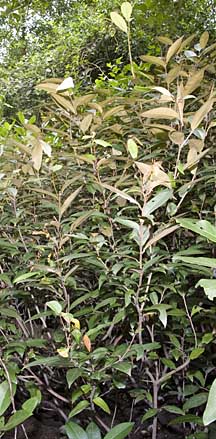 Leaves glossy above, hairy below. Mandai, Mar 11 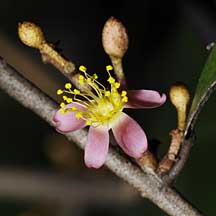 Tiny pink flowers. Woodlands Park, Apr 09 |
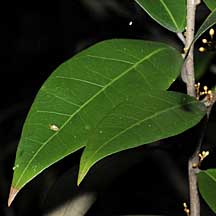 Woodlands Park, Apr 09 |
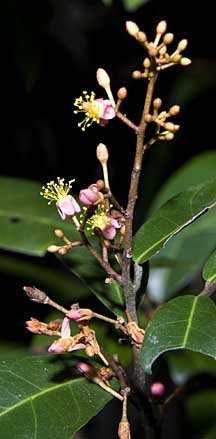 Mandai, Mar 11 |
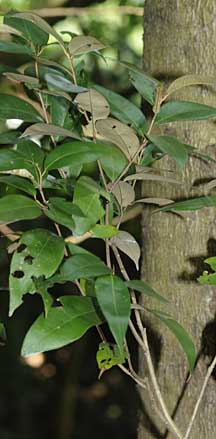 Woodlands Park, May 09 |
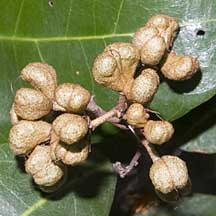 Mandai, Mar 11 |
| Dugun air on Singapore shores |
| Photos of Dugun air for free download from wildsingapore flickr |
| Distribution in Singapore on this wildsingapore flickr map |
|
Links
References
|
|
|